РќРµРІРёРґРёРјС ‹Рµ СѓР ± РёР№С † С‹
It became clear that a new era of domination of cruel underwater assassins had arrived. If the Titanic died as a result of fatal circumstances, the Lusitania, like many other ships that were not military men, was sunk with the expectation to cause panic and fear.
Submarines of ingenious technical toys not only became a threat to merchant and civilian ships, but also put an end to unlimited power on the sea of battleships, cruisers and other surface ships.
During the First World War, belligerent humanity mastered another element in which it hoped to achieve decisive victories - hydrocosmos. Appeared almost invisible weapon - submarines. They realized the age-old dream of the military about the invisible cap. Who among the commanders did not dream of delivering formidable blows, remaining unnoticed by the enemy, and therefore invulnerable? One of the first Russian submariners, Senior Lieutenant Ivan Riznich, explained the importance of submarines with the following example: “Once in the holds of a steamer carrying cotton bales from India, snakes were noticed. Snakes appeared from every crevice and stung deadly. Fear seized the team and passengers. The power of the serpent was in the unpredictability of their appearance and in complete secrecy. So are submarines. Just the thought that somewhere near a submarine will paralyze the enemy with fear. ”
However, in the days of Riznich, submarines were not so much underwater as diving ships. They could be under water just over a day. Then the oxygen was exhausted or the battery was discharged and the boat was forced to float, sometimes at the guns of enemy guns. The appearance of the first combat-ready Russian submarines alarmed the Japanese command so much that when the Hatsuse battleship exploded on a mine delivered by the Amur minelayer, all of its guards opened fire on two sides. And for forty-five minutes the water was threshed, thinking that it was an attack of the Russian submarines. But, unfortunately, there were no Russian submarines in Port Arthur then ...
Back in 1900, Rear Admiral Wilhelm Witgeft sent a memorandum to the commander of the Pacific Forces with a proposal: in the order of experience, install torpedo tubes on old Dzhevetsky’s boats and send them to the Far East. At the end of the year, the Volunteer steamer fleet "Dogmar" "package" was delivered. At the same time, Wittgeft asked to give a telegram with thanks to the submariners. Everything was done so that the Japanese knew about it. This caused such a panic during the demolition of their ships on mines.
Nevertheless, many sea ranks treated submarines with great skepticism. Commander Vice Admiral N.I. Skrydlov did not hide that is their opponent. Vice-Admiral A.A.Birilev, the future maritime minister, was of the same opinion. But despite everything, the submarine fleet developed, teams of future submarines were trained, tactics and methods of warfare were developed. New types of ships were built and designed for new tasks. Everything had to be done for the first time, even the command words for controlling the boat had to be invented.
The technician of ways of communications of MP Naletov first proposed the idea of an underwater mine layer, subsequently implemented by him in the famous "Crab".
Outstanding designer I.G. Bubnov was designed and built a number of very successful ships with powerful torpedo weapons. If 1 or 2 tubular torpedo tubes were installed on foreign submarines, they were 4 on Bubnovian "Shark", and on Bars and Panther on 8. But they became operational during the First World War.
Despite all this, Russia, having lost the war with Japan, turned out to be with a submarine fleet that had a very low combat value by 1914.
Most of the powers, seeing the results of the Russo-Japanese war in the triumph of the Japanese artillery at Tsushima, in the art of mine workers and in the low effectiveness of submarines, allocated maximum funds for the construction of dreadnoughts and super-dreadnoughts. Serious attention was also paid to the development of mine weapons.
“German submarine warfare”, “underwater terror” - these terms during the First World War forced seamen and passengers of ships who found themselves in “forbidden zones” to peer intensely at every point appearing on the surface of the water, hoping that this was not the periscope of a submarine or break trail torpedoes.
Figure depicting the sinking of the British ships Hogue, Cressy and Abukir by the German boat U-9
22 September 1914 for 1 hours 15 minutes The X-NUMX-ton German U-500 submarine sent three British armored cruisers Cressi, Abukir and Hog to the bottom. Britain suffered losses, greater than they were at the Battle of Trafalgar: nearly a thousand and a half people died. Acting in a pirate spirit, Germany sank more than 9 5 ships during the war. Unarmed ships were sent to the bottom without warning and providing time to land on lifeboats. This was a violation of the Hague Convention. Despite Germany’s various statements about military zones, the officially “unlimited submarine war” was not announced until the beginning of the 800 year.
During World War I, relatively small submarines with small crews became an integral part of military fleets. Their ability to operate covertly in the open sea and off the coast of the enemy, the suddenness of the strikes aroused interest in them, and submarines began to be built and included in the fleets of all countries in large quantities.
Germany during the First World War built 372 boats, losing 178 of them. England, having started a war with 68 boats, in the course of the hostilities launched 179. In the 13 years before World War I, France gave the 6 experimental and 104 production fleet of various types of 22 boats. The Russian fleet before the revolution and the civil war was 52 submarines. The First World War showed that a new force had appeared on the sea with new methods and tactics of combat.
“Never before has combat experience been studied as thoroughly as in the years following the First World War,” historians noted. “And never before have the warring powers made such divergent conclusions from the combat experience studied. Thus, the British saw in submarines mainly anti-submarine defense weapons and a naval blockade. The Americans considered the enemy’s warships, battleships, aircraft carriers, cruisers, and destroyers, to be the main target of submarines. The Japanese sought to create boats capable of operating as part of squadrons dominating the sea. Finally, the Germans, believing that the main objective of the submarines would be the enemy merchant fleet, put them in second place after the surface raiders - high-speed battle cruisers ”.
Thus, in accordance with the state views on the purpose of the submarine fleet in the Second World War, the Germans, Italians and the Japanese acted against the allied submarines of the USSR, Great Britain, America and France. The Germans almost destroyed the British merchant fleet.
The British learned to masterfully combat enemy submarines. The Americans were hunting for Japanese aircraft carriers and drowned them at the slightest opportunity.
From the very beginning, the Soviet submarine fleet was created as a strike part of the naval forces and had submarines of various types: small for coastal operations, medium for high seas, and large for cruising operations on remote enemy communications. The first ship that was designed for the Soviet fleet was a submarine of type "D". In 1927, the first series of such boats was laid. Submarines were designed and built not only in view of their combat purposes, the theater of military operations was also taken into account. So, for the Pacific Fleet built boats XI series, which could be transported by rail unassembled. And in 1932, designer A.Asafov proposed small submarines transported as assembled.
By 1940, the USSR had the most numerous and modern submarine fleet in the world. It consisted of 16% large boats, 45% medium and 39% small. The Soviet submariners destroyed 938 000 tons of enemy merchant fleet and 87 warships of various classes during the fighting. Many ships were awarded the title of "Guards", and their commanders were awarded the title "Hero of the Soviet Union." Mastery in battle helped even artillery battles that were not typical for submarines with enemy surface and anti-submarine ships. Submariners have learned how to perform besperiskopnye attacks according to underwater acoustics. The boat under the command of N. Lunin entered into battle with the fascist battleship Tirpitz, forcing him to abandon the intended operation.
In August, 1942, the German intelligence received information about the British convoy moving from Gibraltar to Malta from the 14 major transports. The British included in the escort, apart from destroyers and cruisers, the Eagle aircraft carrier, which was supposed to provide air cover for the convoy, but he himself was a victim of the torpedo attack of the German U-73 submarine — an explosion of steam boilers destroyed the aircraft carrier, and the airborne convoy was almost completely destroyed by German torpedo boats, aircraft and submarines.
During the war, German submariners sank 2 battleships, 5 aircraft carriers, 6 cruisers and 88 ships of other classes, and allied losses in transport ships were even greater.
30 January 1945 of the year on the Soviet submarine "C-13", located in the Southern Baltic, acoustics caught the noise of the propellers of a group of ships, this was immediately reported to the captain of the 3 rank A. Marinesko. The boat moved to meet, and in 21.10 the steering signalman found the enemy ships. These were the Hansa motor ship and the Wilhelm Gustlov liner, surrounded by escort ships.
A few hours of chase and a powerful explosion 3 carried to the bottom of the 50 crews from 1500 skilled submariners of Nazi Germany. The security did not expect the attack of the submarine from the coastal shoal. In another expedition, the C-13 crew destroyed another 8 thousand - a whole division of the best German specialists from the large transport “General Steuben”.
From the results of the First World War, each country made its own conclusion. The Americans believed that battleships, aircraft carriers, cruisers would be the main target of submarines, and built submarines capable of operating as part of the fleet, and directly in the waters of the enemy. And having 112 boats at the beginning of the Second World War, in the course of it they developed a number of successful designs of the “Gatou” boat and modification of the “Balao” type of boat, having commissioned new submarines 203.
submarine "C-13". rice V. Emysheva
During the war, American casualties were 52 submarines killed by Japanese surface ships. The Japanese, in turn, lost 9 aircraft carriers, 1 battleship, 12 cruisers, 122 small surface ships and 23 submarines - almost a third of the entire fleet. Of all the warring powers, Japan paid special attention to the submarines carrying the aircraft on board. Riding the achievements of the steel submarines series "I-400", capable of placing on board two bomber, then the hangar was increased to 3 aircraft. These aircraft carrier submarines could autonomously be at sea up to 90 days with a range of up to 30 thousands of miles and speeds of 16 knots. But until the end of the war, the Japanese managed to build the entire 2 boats of this type.
The Italians had the largest submarine fleet by the beginning of the war. Its basis was made by average boats of type "Argonauta". During the fighting, which was conducted mainly in the Mediterranean, another 41 boat was put into operation. But the main success of the Italian fleet was the first experience of using human-guided torpedoes. Two such torpedoes (mini-boats) in December 1940 for a long time knocked out two British battleships. By September 1943, Italy was out of the war. Its losses amounted to: 84 boats were sunk, 34 capitulated, 20 destroyed by their crews, 10 captured by the Germans, 9 disarmed.
The first Italian experience began to actively use the British. Having developed a MK-1 guided missile transporter, several submarines, including the Thunderbolt, were converted to its carriers.
The Germans, on the other hand, formed the so-called “K” compound (from Kleinkampferband, a small battle combination. - Approx. Ed.). He was armed with guided torpedoes and ultra-small submarines of the Zeekhund, Molch Bieber, etc. The Japanese had guided torpedoes like the Kaiten-1 and the Kaiten-2, which could be transported on an I-58 carrier boat ". But none of them participated in the hostilities.
During the Second World War, many innovations in submarine warfare were tested, some of which were further developed in the post-war period. The fate of others ended in a military confrontation. The fate of the French Navy was dramatic. Her ships were sank and the British, and Americans, and Germans, and even the French themselves. Of the 77 boats, she lost 65, 29 were sunk by the allies, 19 by the French themselves, and the rest by the Italians, Germans and Japanese.
During the war, both the strengths and weaknesses of the submarines showed up. Whatever it was, but the submarines returned from the battlefield with many new devices and devices. They began to charge the batteries, almost without rising, but only putting the snorkel air intake on the surface. Acoustic torpedoes themselves were guided by the noise of the propellers. The power of weapons, stealth, range, increased, but there were also means to detect and destroy. Submarines gained night vision using radar, as well as scuba flair due to sonar sonars. They learned how to find not only the enemy radio transmitters, but also the rays of its radars.
So the opposition under water was transferred from hydrocosmos to another sphere - to radio electronic fields, to the ether. Many other innovations were invented, but the main drawback - the need to float to the surface after two or three days of underwater travel - the submarines never got rid of.
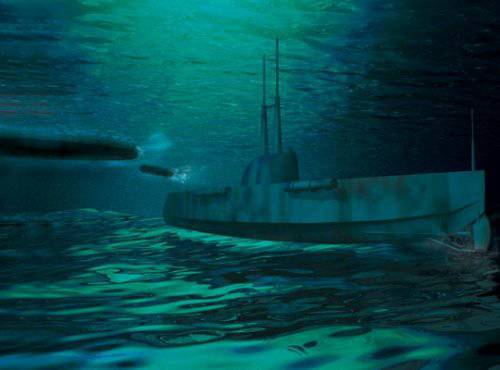
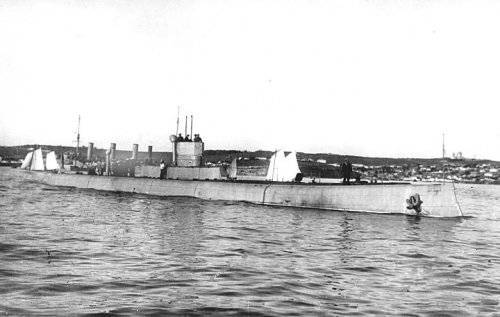
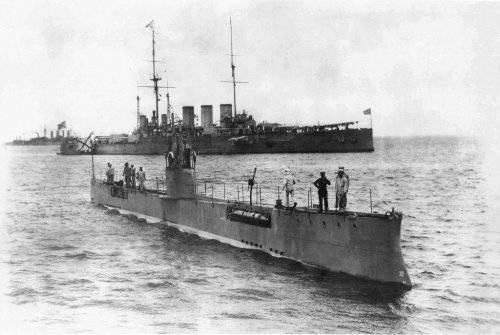
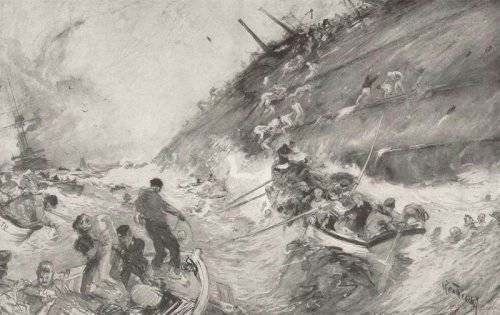
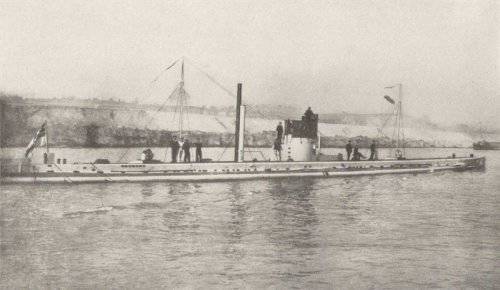
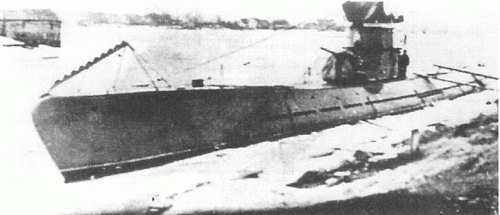
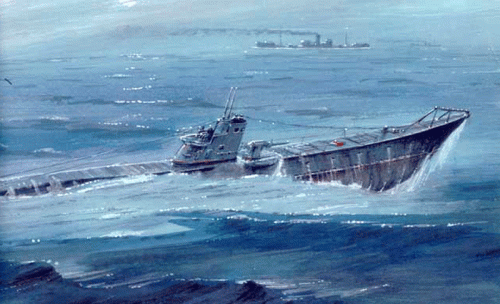
Information